#shimeyo
Explore tagged Tumblr posts
Text

2K notes
·
View notes
Text

Daily drawing, day 21
@yvngbird's Shimeyo
27 notes
·
View notes
Text
What’s In a Book? Part 29
While going through my collection I managed to find a few books that have yet to be featured on here yet. I decided to go with this one as, upon further review, I noticed that it actually contained a wealth of information that I had previously ignored ^^;
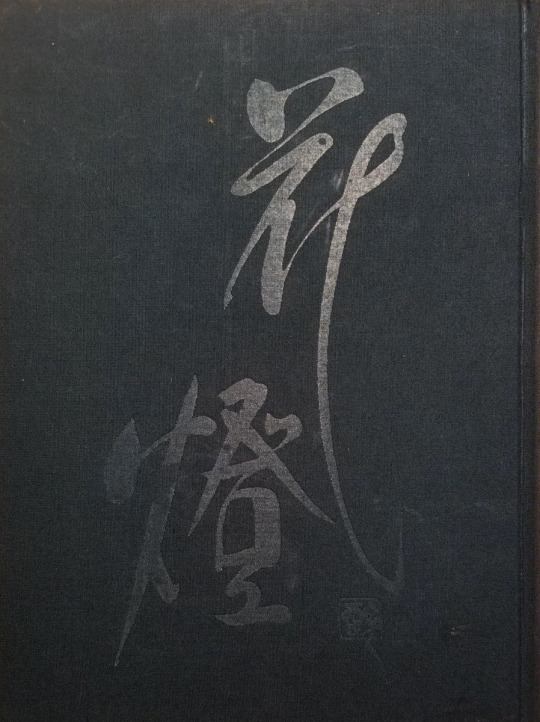
Image of book’s cover courtesy of myself. Hana Akari: Showa Meigiren (はなあかり: 昭和名妓連) - Brilliant Flowers: The Showa Period’s Finest Geisha by Kobunshi Katsura (桂小文枝) (ISBN Unknown). Date of Publication: 1988 Language: Japanese and English (Some Essays and Names Only) Format: Hardcover Availability: Can be found up for auction on a fairly regular basis Price: Anywhere from $30 - $80 Errors: 0 This book is interesting, and that’s putting it mildly. Basically, it provides us with some of the best raw data for its time: The names of the most prominent geisha in each district of each city across all of Japan. It is a literal who’s who guide to the karyukai across the country in the late 1980s and is illuminating both in small essays that can be found at the front and back of the book explaining various schools and styles, but especially because it provides us with images, most in full color, of these amazing women. The book overall is divided into regions which are then broken down further from there. The regions, cities, and districts of each named geisha are: Part 1: Hokkaido (北海道) Set 1: Asahikawa (旭川) - Kofune (小舟) Set 2: Sapporo (札幌) - Onobu (お信), Itoko (い登子), Izumi (いづみ), and Charako (茶良子) Set 3: Otaru (小樽) - Komomo (小桃), Mametarō (豆太郎), Kiku (㐂久), and Gorō (吾朗) Set 4: Muroran (室蘭) - Chonko (﹅子) Set 5: Hakodate (函館) - Nantoki (喃登希) and Kohide (小ひで) Part 2: Tohoku (東北) Set 1: Morioka (盛岡) - Tsutamaru (都多丸) Set 2: Hanamaki (花巻) - Kimiko (君子) and Keiko (桂子) Set 3: Aomori (青森) - Chame (茶目) Set 4: Yamagata (山形) - Kochō (小蝶) and Kinta (金太) Set 5: Akita (秋田) - Chiyogiku (千代菊) Set 6: Obara (小原) - Ikkyū (一休), Aki (秋), and Kogiku (小菊) Set 7: Fukushima (福島) - Sakura (さくら) and Hidemi (秀美) Part 3: Kanto (関東) Set 1: Takasaki (高崎) - Kiyoko (清子) Set 2: Kusatsu (草津) - Sankoma (三駒) and Harumi (春美) Set 3: Sarugakyo (猿ヶ京) - Kikutaro (菊太郎), Koshizu (小静) Set 4: Minakami (水上) - Yutaka (ゆたか) Set 5: Oyama (大山) - Kunika (くに香) Set 6: Tokyo (東京) - Fumie (冨美江) and Wakaryū (若龍) Set 7: Yugawara (湯河原) - Okame (お加目), Matsue (松栄), and Taeko (多恵子) Part 4: Chubu (中部) Set 1: Niigata (新潟) - Chiyogiku (千代菊) Set 2: Takada (高田) - Kazuko (加津子) Set 3: Shibata (新発田) - Renko (れん子) Set 4: Kamidayamadatogura (上山田戸倉) - Senryū (泉竜), Suzuyakko (鈴奴), Saizō (才三), and Utamaru (歌丸) Set 5: Kamisuwa (上諏訪) - Chiyomaru (千代丸) Set 6: Isawa (石和) - Miki (美樹) and Koyakko (小奴) Set 7: Kōfu (甲府) - Misako (美佐子), Kimika (君香), and Hisayo (久代) Set 8: Inuyama (犬山) - Misako (みさ子) Set 9: Hamamatsu (浜松) - Gonza (権三), Ichitarō (市太郎), Otomi (乙美), Koman (小萬), Eiko (栄子), Hatsutarō (初太郎), Tsuruchiyo (鶴千代), Yasuyo (泰世), Sakura (佐久良), Sachiko (幸子), Toshie (利枝), Komomo (小百々), Momoko (百々子), Fumiya (二三弥), Mitsugiku (光菊), Azuma (吾妻), Akiko (明子), and Ichiha (市羽) Set 10: Kanazawa Higashi/East (金沢東) - Koman (小まん) Set 11: Kanazawa Kazuemachi (金沢主計町) - Hitoha (一葉) and Kyōko (京子) Set 12: Kanazawa Nishi/West (金沢西) - Mineko (峯子), Sachiyo (幸代), and Marichiyo (まり千代) Set 13: Fukui (福井) - Makiko (真㐂子) and Yurako (由良子) Set 14: Yuzawa (湯沢) - Katsumaru (勝丸) and Hiromi (弘美) Set 15: Nagoya (名古屋) - Fukuchiyo (福千代), Takako (敬子), Tsuruko (つる子), Mitsuyo (光代), Kiku (喜久), Emiya (英美弥), Sanchō (三長), Satoyo (里代), Mitsu (未津), Ayako (あや子), Kinmaru (��丸), Naoe (直枝), Fukuwaka (福若), Hisae (比三枝), Mako (間子), Yasuko (康子), Toshino (とし乃), Koie (鯉恵), Mariko (まり子), Katsuko (かつ子), Maiko (舞子), Kingyo (金漁), Hideka (秀佳), Chiyoe (千代江), and Motoko (素子) Part 5: Kinki (近畿) Set 1: Osaka (大阪) Part A: Osaka Minami (大阪南) - Yukiharu (雪春), Kikutsuru (菊つる), Kikue (菊恵), Rikimaru (力丸), Kinko (きん子), Yukiji (ゆき路), Kōjirō (廣二郎), Yoshiko (よし子), Terugiku (照菊), Midori (美登利), Hankō (はん幸), Kazumi (かず美), Yukie (ゆき恵), Yūka (勇花), Suzuka (鈴佳), Masako (まさ子), Fukuemi (福笑), Masachiyo (政千代), Kikufumi (菊二三), and Yūko (祐子). Part B: Osaka Horie (大阪堀江) - Temari (てまり) Part C: Osaka Shinmachi (大阪新町) - Hatsuko (はつ子) and Tamao (玉緒) Part D: Osaka Kitashinchi (大阪北新地) - Komaka (駒香), Umesada (梅さだ), Umetomi (梅十三), Suzume (寿々女), and Umemitsu (梅充). Set 2: Kyoto (京都) Part A: Gion Kobu (祇園甲部) - Komame (小まめ), Hisae (久栄), Katsuyū (かつ勇), Haruyū (春勇), Miyokazu (美代一), Fukusono (フク園), Satoharu (里春), Yoshigiku (義㐂久), Kōsono (晃園), Teruha (照葉), Mamekō (まめ晃), Fukuyū (福勇), Kanoko (かの子), Machiko (真知子), Kumiko (玖見子), Kohana (子花), Takayū (孝友), Teruchiyo (照千代), Takeha (竹葉), Nakako (奈加子), Mameyū (まめ勇), Sonoko (その子), Tomichiyo (斗美千代), Yoshimame (芳豆), Kofumi (小富美), Kanoju (かの寿), Mamechiyo (豆千代), Katsufuku (かつ福), Mameji (豆爾), Toyochiyo (豊千代), Katsuji (佳つ二), Ichigiku (市季久), Mamezuru (まめ鶴), Koman (小萬), Michiko (道子), Miyokichi (美与吉), Aika (愛香), Teruyo (照代), Fumichiyo (富美千代), Kikuharu (菊春), Masuko (ます子), Momoko (桃子), Kosode (小袖), Chōji (長治), Tomigiku (冨菊), Komasu (小ます), Emiji (恵美二), Dan-e (だん栄), Koyū (小ゆう), Yukiryō (幸良), Hanachiyo (花千代), Miyuki (美ゆき), Masaru (勝), Kanoji (かの次), Hiromi (廣美), Kotomi (小とみ), and Ainosuke (愛之介). Part B: Pontocho (先斗町) - Miyofuku (美代福), Hisakō (久幸), Raiha (来葉), Momiha (もみ葉), Ichiko (市子), Shinatomi (シナ富), Mameharu (豆治), Hisafumi (久富美), Ichisen (市扇), Mameyuki (豆幸), Umeyū (梅佑), Ichitoyo (市豊), Mameshizu (豆志津), Ichisono (市園), Mamechiyo (豆千代), Hisaroku (久ろく), Ichimitsu (市光), Momizuru (もみ鶴), Hide-e (英江), Tomizuru (富鶴), Emiju (笑寿), Fudeya (フデ哉), Miyosaku (ミヨ作), Ichihiro (市宏), and Shinateru (シナ照). Part C: Gion Higashi (祇園東) - Toyoji (豊治), Fumie (章栄), Chika (ちか), Tsurukazu (つる和), Tsunekazu (つね和), Tsunehisa (つね久), Masuko (ます子), Toyohisa (豊寿), and Masako (満佐子). Part D: Miyagawa Cho (宮川町) - Wakaharu (若晴). Kanae (叶恵), Fumichō (富美蝶), Mikiryū (三木竜), Wakachika (若千加), Fukukazu (ふく和), Toshiyū (敏祐), Suzuchiyo (鈴千代), Hinachō (雛蝶), Chikayoshi (千賀俊), Mieko (美恵子), Fukusome (冨久染), Tane-e (種栄), and Tanekazu (たね和). Part E: Kamishichiken (上七軒) - Tei (てい), Emi (恵美), Katsukiyo (勝㐂代), Tamafuku (玉福), Fukuzuru (福鶴), Hisazuru (久鶴), Tsuruzō (鶴三), Hisawaka (久若), Tamaryō (玉龍), Shimeyo (〆代), Katsumaru (勝丸), Naoko (尚子), Kokimi (小㐂美), and Kohan (小はん). Set 3: Nara (奈良) - Suzumi (須寿美) Set 4: Genrō (彦桹) - Kikuyū (菊勇) and Masaya (政弥). Set 5: Otsu (大津) - Omasa (おまさ) Set 6: Kinosaki (城崎) - Tomiyū (富勇) and Kanoko (佳乃子) Set 7: Wakayama (和歌山) - Kikuchiyo (菊千代) Set 8: Shirahama (白浜) - Tsutagiku (蔦菊) Set 9: Osaka Imasato (大阪今里) - Koito (小糸) and Kichihide (吉秀) Set 10: Imasato (今里) - Kichitama (吉玉) Set 11: Kyoto Shimabara (京都島原) - Hana Ōgi Tayū (花扇太夫) Part 6: Chūgoku (中国) and Shikoku (四国) Set 1: Tamatsukuri (玉造) - Naoko (尚子), Yae (八重), and Kishi (貴志). Set 2: Okayama (岡山) - Yakko (奴) and Chizu (知寿) Set 3: Takamatsu (高松) - Hamachiyo (浜千代) Set 4: Matsuyama (松山) - Ippei (一平) Set 5: Tokushima (徳島) - Fukuyo (福代) and Akiyo (明代) Set 6: Kochi (高知) - Kimiryū (君龍) and Sadamaru (貞丸) Part 7: Kyushu (九州) Set 1: Hakata (博多) - Mieko (美恵子) Set 2: Kurume (久留米) - Okiyo (お清) Set 3: Ureshino (嬉野) - Hisamatsu (久松), Komatsu (小松), Koshin (小新), Hisaryū (久竜), and Marikō (まり幸). Set 4: Isao (武雄) - Fumiya (文弥) Set 5: Beppu (別府) - Mitsugiku (光菊), Fujikatsu (ふじ勝), Umesono (梅園), and Tomiko (富子) Set 6: Kumamoto (熊本) - Ayako (あや子) Set 7: Kagoshima (鹿児島) - Aimaru (愛丸) The only areas that I noted are missing are some of the hot springs towns. I’m not too sure why they were skipped over, but it’s possible that the author did not have any connections to them. The most informative part that I admit I skipped initially is the small print under each geisha’s name: their natori specialty, natori teachers, and natori names. This means that we can trace back what schools were the main specialty of each region going back decades. Since this is invaluable for anyone studying geisha over time, I’ll write in what schools were followed, but I will keep names a secret. Districts are as follows: Part 1: Hokkaido (北海道) Set 1 Asahikawa (旭川) - Kineya (杵屋) Set 2: Sapporo (札幌) - Wakayagi (若柳) for dance and Tadeko (蓼胡) for song Set 3: Otaru (小樽) - Fujima (藤間) for dance and Tadeko (蓼胡), Kineya (杵屋), Kiyomoto (清元), Shunnichi (春日), and Tokiwazu (常磐津) for song. Set 4: Muroran (室蘭) - None Given Set 5: Hakodate (函館) - Tanaka (田中) for dance and Matsunaga (松永) for song. Part 2: Tohoku (東北) Set 1: Morioka (盛岡) - Tokiwazu (常磐津) for song. Set 2: Hanamaki (花巻) - Wakayagi (若柳) for dance and Kineya (杵屋) for song. Set 3: Aomori (青森) - None Given. Set 4: Yamagata (山形) - Fujima (藤間) for dance. Set 5: Akita (秋田) - None Given. Set 6: Obara (小原) - None Given Set 7: Fukushima (福島) - None Given. Part 3: Kanto (関東) Set 1: Takasaki (高崎) - Hanayagi (花柳) for dance and Okayasu (岡安) for song. Set 2: Kusatsu (草津) - Hanayagi (花柳) for dance. Set 3: Sarugakyo (猿ヶ京) - Kineya (杵屋) for song. Set 4: Minakami (水上) - Kineya (杵屋) for song. Set 5: Oyama (大山) - Kineya (杵屋) Set 6: Tokyo (東京) - Taguchiko (田口湖) for dance and Kineya (杵屋) for song. Set 7: Yugawara (湯河原) - Tanaka (田中) and Fujima (藤間) for dance and Tokiwazu (常磐津), Kineya (杵屋), and Tadeai (蓼相) for song. Part 4: Chubu (中部) Set 1: Niigata (新潟) - None Given. Set 2: Takada (高田) - None Given. Set 3: Shibata (新発田) - Okayasu (岡安) for song. Set 4: Kamidayamadatogura (上山田戸倉) - Bandō (坂東) for dance and Tōsha (藤舎), Shunnichi (春日), Kineya (杵屋), and Kiyomoto (清元) for song. Set 5: Kamisuwa (上諏訪) - Kineya (杵屋) for song. Set 6: Isawa (石和) - Hanayagi (花柳) for dance and Mochizuki (望月) for song. Set 7: Kōfu (甲府) - Hanayagi (花柳) for dance and Kiyomoto (清元), Okayasu (岡安), and Nagami (長巳) for song. Set 8: Inuyama (犬山) - Nishikawa (西川) for dance and Kineya (杵屋) for song. Set 9: Hamamatsu (浜松) - Fujima (藤間) and Fukuwara (福原) for dance and Kiyomoto (清元), Yoshimura (芳村), Shunnichi (春日), Nishikiharu (錦春), and Tokiwazu (常磐津) for song. Set 10: Kanazawa East (金沢東) - Kamizaki (神崎) for dance. Set 11: Kanazawa Kazuemachi (金沢主計町) - Fujima (藤間) for dance and Kineya (杵屋) and Mochizuki (望月) for song. Set 12: Kanazawa Nishi/West (金沢西) - Nishikawa (西川) for dance and Tōsha (藤舎), Okayasu (岡安), and Kashida (堅田) for song. Set 13: Fukui (福井) - Fujima (藤間) for dance and Utazawa (哥沢) for song. Set 14: Yuzawa (湯沢) - None Given. Set 15: Nagoya (名古屋) - Nishikawa (西川) for dance and Kiyomoto (清元), Tokiwazu (常磐津), Sumida (住田), Kineya (杵屋), Kishizawa (岸沢), Shunnichi (春日), and Fujimatsu (ふじ松) for song. Part 5: Kinki (近畿) Set 1: Osaka (大阪) Part A: Osaka Minami (大阪南) - Onoe (尾上), Fujima (藤間), Bandō (坂東), and Hanayagi (花柳) for dance and Kiyomoto (清元), Kondo (今藤), Mochizuki (望月) and Tokiwazu (常磐津) for song. Part B: Osaka Horie (大阪堀江) - Nishikawa (西川) for dance. Part C: Osaka Shinmachi (大阪新町) - Nishikawa (西川) for dance and Kineya (杵屋), Shunnichi (春日), and Ogie (荻江) for song. Part D: Osaka Kitashinchi (大阪北新地) - Nishikawa (西川) and Hanayagi (花柳) for dance and Kineya (杵屋), Tamura (田村), Uji (宇治), Tokiwazu (常磐津), Tagawa (田川), Kiyomoto (清元), and Yoshimura (吉村) for song. Set 2: Kyoto (京都) Part A: Gion Kobu (祇園甲部) - Inoue (井上) for dance. Part B: Pontocho (先斗町) - Onoe (尾上), Nishikawa (西川), and Wakayagi (若柳) for dance and Tōsha (藤舎), Kondo (今藤), Nakamura (中村), Ogie (荻江), Bungo (豊後), Kineya (杵屋), and Tokiwazu (常磐津) for song. Part C: Gion Higashi (祇園東) - Fujima (藤間) for dance and Tokiwazu (常磐津), Yanagi (柳), Nakamura (中村), Kineya (杵屋), and Tōsha (藤舎) for song. Part D: Miyagawa Cho (宮川町) - Umemoto (楳茂都), Wakayagi (若柳), and Rokugō (六鄕) for dance and Kondo (今藤), Bungo (豊後), Kiyomoto (清元), Yanagi (柳), Yamakishi (山岸), Utazawa (哥沢), Tadeko (蓼胡), and Umeya (梅屋) for song. Part E: Kamishichiken (上七軒) - Hanayagi (花柳) for dance and Tokiwazu (常磐津), Shunnichi (春日), Toyomoto (豊本), Kiyomoto (清元), Tōsha (藤舎), and Kiyoyuki (清之) for song. Set 3: Nara (奈良) - Kineya (杵屋) for song. Set 4: Hikone (彦桹) - None Given. Set 5: Otsu (大津) - Yanagi (柳) for song. Set 6: Kinosaki (城崎) - Wakayagi (若柳) and Onoe (尾上) for dance. Set 7: Wakayama (和歌山) - Onoe (尾上) for dance. Set 8: Shirahama (白浜) - Okayasu (岡安) for song. Set 9: Osaka Imasato (大阪今里) - Kineya (杵屋), Shunnichi (春日), and Kiyomoto (清元) for song. Set 10: Imasato (今里) - None Given. Set 11: Kyoto Shimabara (京都島原) - None Given. Part 6: Chūgoku (中国) and Shikoku (四国) Set 1: Tamatsukuri (玉造) - Fujima (藤間) for dance and Kineya (杵屋) for song. Set 2: Okayama (岡山) - Onishi (小西) for dance. Set 3: Takamatsu (高松) - Kiyomoto (清元) for song. Set 4: Matsuyama (松山) - Kiyomoto (清元) and Tamura (田村) for song. Set 5: Tokushima (徳島) - Yoshitō (芳膛) for dance and Kiyomoto (清元) and Tamura (田村) for song. Set 6: Kochi (高知) - Kiyomoto (清元) and Tamura (田村) for song. Part 7: Kyushu (九州) Set 1: Hakata (博多) - Kondo (今藤), Shunnichi (春日), and Kashida (堅田) for song. Set 2: Kurume (久留米) - Tokiwazu and Shunnichi (春日) for song. Set 3: Ureshino (嬉野) - Hanayagi (花柳) and Fujima (藤間) for dance and Matsunaga (松永) and Tagoto (田毎) for song. Set 4: Isao (武雄) - Fujima (藤間) for dance. Set 5: Beppu (別府) - Tokiwazu (常磐津), Kiyomoto (清元), and Hisago (瓢) for song. Set 6: Kumamoto (熊本) - Hanayagi (花柳) for dance and Kondo (今藤) for song. Set 7: Kagoshima (鹿児島) - Kineya (杵屋) and Tagoto (田毎) for song. The reason why this book has no ISBN is because it was self published. The original cover price was ¥30,000, which is almost $300 USD. This price was likely set due to the vast amount of research done, including acquiring the many photographs, and printing costs. This price was also likely due to it being targeted at serious karyukai connoisseurs as that price in the 1980s would have been much higher now due to inflation. Nowadays you don’t have to pay as much for this book as most Japanese sellers see it as outdated and it can be found quite regularly on Japanese retail sites, such as Yahoo Japan Auctions or Rakuten. The only “errors: that I could find were some spelling issues, but that’s because they’re using the Japanese way of writing Romaji and not the Hepburn System. So, I’m not counting them as errors, but rather just making note of them to anyone who purchases this book. Rating: ✪✪✪✪ (out of 5)
35 notes
·
View notes
Text
research on samuri helmet crests


i am doing some research on some samurai helmet crests and us this in my work on my model and seeing what i like about it and what parts i don’t want on it
apanese helmets dating from the fifth century (long before the rise of the samurai class) have been found in excavated tombs. Called mabizashi-tsuke kabuto (visor-attached helmet), the style of these kabuto came from China and Korea and they had a pronounced central ridge.
Kabuto, which is now known as a samurai helmet, first appeared in the 10th century Heian period with the appearance of ō-yoroi. In the Sengoku period in the 16th century, when battles between samurai changed into gun and group battles, ō-yoroi and dō-maru went out of fashion and tosei-gusoku (gusoku) was born, and the style of kabuto changed greatly.
In the Edo period, when the Tokugawa shogunate defeated the Toyotomi clan at Summer Siege of Osaka and the society became peaceful, armor with a revival of the medieval times became popular, and ō-yoroi and dō-maru style kabuto were made again.
The kabuto was an important part of the equipment of the samurai, and played a symbolic role as well, which may explain the Japanese expressions, sayings and codes related to them. One example is Katte kabuto no o wo shimeyo (lit. "Tighten the string of the kabuto after winning the war"). This means don't lower your efforts after succeeding (compare to "not to rest on one's laurels").Also, kabuto wo nugu (lit. "to take off the kabuto") means to surrender.
0 notes
Text
50 Câu Thành Ngữ Tiếng Nhật Cần Biết Để Giỏi Hơn Trong
Để nói chuyện giống với người bản xứ, bạn nên biết 50 câu thành ngữ tiếng Nhật thông dụng dưới đây. Hiểu và sử dụng thành ngữ đúng cách, bạn sẽ thật sự ghi điểm trong mắt người dân Nhật Bản. Hãy đọc và học ngay lúc này nhé!
1, Tầm quan trọng của việc học thành ngữ tiếng Nhật
Cũng giống như tiếng Việt, tiếng Nhật cũng có nhiều câu thành ngữ, tục ngữ. Đây là những câu nói có những hàm ý, ý nghĩa sâu xa. Trong giao tiếp tiếng Nhật, chắc chắn bạn đã từng bắt gặp những cụm từ mà nghe có vẻ rất kỳ quặc. Vì dịch từ sang từ nó chẳng có nghĩa gì cả hoặc nghĩa nó thật lạ lùng.
Điều đó có nghĩa là bạn cần phải học, hiểu các thành ngữ tiếng Nhật để giao tiếp thuận tiện hơn.
Ở Nhật, thành ngữ rất phổ biến không chỉ trong giao tiếp. Bạn có thể bắt gặp nhiều câu thành ngữ tiếng Nhật trong truyện manga, phim hoạt hình anime. Thậm chí bạn có thể thấy chúng rất nhiều trên các bản tin, chương trình văn hóa hay trong các lời bài hát.
Nên để hiểu hơn về một bộ phim, bản tin, ca khúc hay nội dung một cuốn sách tiếng Nhật thì bạn lại càng phải học thành ngữ Nhật Bản.
Mọi ngôn ngữ, mọi nền văn hóa đều có các câu thành ngữ. Chúng làm cho lời văn, lời nói ngắn gọn và súc tích hơn. Ở Nhật Bản, trẻ con được khuyến khích sử dụng thành ngữ, tục ngữ. Bởi chúng là những kết tinh kiến thức, văn hóa từ xa xưa.
Do vậy, biết về thành ngữ của Nhật Bản, bạn cũng sẽ hiểu thêm về nền văn hóa của đất nước mặt trời mọc.

2, 50+ câu thành ngữ tiếng Nhật thông dụng nhất
Bạn đang là sinh viên ngôn ngữ Nhật, một thực tập sinh, du học sinh, người xuất khẩu lao động hay đơn giản chỉ là một người yêu nước Nhật và muốn tìm hiểu về nền văn hóa Nhật. Bạn cần phải biết đến 50 thành ngữ tiếng Nhật thông dụng sau đây:
せんりのみちもいっぽから – Vạn sự khởi đầu nan
Ý nghĩa: Mọi sự việc bắt đầu luôn luôn có những khó khăn.
⾺の⽿に念仏(うまのみみにねんぶつ- Đàn gảy tai trâu
Ý nghĩa: Làm một điều gì đó vô nghĩa vì người nghe không tiếp thu được. Cũng giống như: nước đổ đầu Vịt.
隣の花は⾚い(となりのはなはあかい – Đứng núi này trông núi nọ.
Ý nghĩa: Chỉ những người không giữ vững lập trường.
失敗は成功のもと(しっぱいはせいこうのもと) – Thất bại là mẹ thành công
Ý nghĩa: Thất bại là nguồn gốc của sự thành công
⼈⽣⼭あり⾕あり(じんせいやまありたにあり) – Lên voi xuống chó
Ý nghĩa: Cuộc đời có lúc nọ lúc kia, lúc vinh, lúc bại.
知らぬが仏 (しらぬがほとけ) – Điếc không sợ súng
Nghĩa đen: Điếc không sợ súng. Có nghĩa ám chỉ là sự bình tĩnh, không xao động
七転び⼋起き (ななころびやおき)- Có công mài sắt, có ngày nên kim
Ý nghĩa: Chỉ sự cần cù, không nản chí, cố gắng đến cùng ắt sẽ thành công.
⽝猿の仲 (けんえんのなか) – Như chó với mèo
Ý nghĩa: Chỉ hai người tính cách trái ngược nhau.
⽑のない猿 (けのないさる) – Ăn cháo đái bát
Ý nghĩa: Chỉ những người không biết đến tình nghĩa, ơn nghĩa.
雀の涙 (すずめのなみだ)- Nước mắt chim sẻ- Bé như mắt muỗi
Ý nghĩa: Nói về những điều vô cùng nhỏ bé
時は金なり(ときはかねなり) – Thời gian là vàng bạc
Ý nghĩa: Nói về tầm quan trọng của thời gian
井の中の蛙 – Ếch ngồi đáy giếng
Ý nghĩa: Chỉ những người có tầm nhìn hạn hẹp
煙あれば⽕あり (けむりあればひあり) – Không có lửa làm sao có khói
Ý nghĩa: Sự việc lúc nào cũng phải có nguyên nhân của nó.
勝って兜の緒を締めよ。(Katte kabuto no o wo shimeyo) – Thắng không kêu, bại không nản
Ý nghĩa : Cần phải biết giữ cảm xúc.
朝飯前 (あさめしまえ) – Dễ như ăn bánh
Ý nghĩa: Nói về một việc quá dễ làm
⾒ぬが花 (みぬがはな) – Người tính không bằng trời tính
Ý nghĩa: Điều thực tế diễn ra không như chúng ta dự tính từ trước.
草を打って蛇を驚かす ( くさをうってへびをおどろかす) – Đánh rắn động cỏ
Ý nghĩa: Có những việc chỉ vô tình làm dẫn đến kết quả bất ngờ, hoặc trừng phạt một người để cảnh cáo những người khác có liên quan.
夫夫たり婦婦たり ( ふふたりふふたり) – Thuận vợ thuận chồng tát bể đông cũng cạn
Ý nghĩa: Vợ chồng luôn phải đồng lòng thì việc gì cũng làm được, khó khăn nào cũng vượt qua.
愛は⼩出しにせよ (あいはこだしにせよ) – Yêu nhau lắm, cắn nhau đau
21.朱に交われば⾚くなる (しゅにまじわればあかくなる) – Gần mực thì đen, gần đèn thì rạng
Ý nghĩa: Con người luôn bị ảnh hưởng bởi những người xung quanh. Hãy tìm những người tốt để học hỏi theo.
順⾵満帆 (じゅんぷうまんぱん) – Thuận buồm xuôi gió.
Ý nghĩa: Mọi sự thành công
勤勉は賢さを補う : きんべん (kinben) – Cần cù bù thông minh.
立つ鳥跡を濁さず(たつとりあとをにごさず)- Chim muốn bay mà nước chẳng động
Ý nghĩa: Nên sắp xếp mọi thứ vào trật tự trước khi rời đi.
⼀期⼀会: (いちご いちえ) – Đời người chỉ gặp một lần
Ý nghĩa: Nên trân trọng cuộc gặp gỡ với một người.
漁夫の利 (ぎょふのり) – Ngao sò tranh đấu, Ngư ông đắc lợi
Ý nghĩa: Lợi nhuận của ngư ông. Có nghĩa là người thứ 3 được lợi giữa cuộc chiến của hai người khác.
石の上にも三年 (いしのうえにもさんねん)-3 năm đứng trên hòn đá
Ý nghĩa: Chỉ sự kiên trì, cố gắng rồi có ngày thành công.
ちりも積もれば山となる (ちりもつもればやまとなる)- Tích tiểu thành đại
Ý nghĩa: Ngay cả cây bụi nếu chất đống cũng thành núi. Có nghĩa là làm gì cũng làm từng bước nhỏ 1. Sau thời gian thì sẽ làm được việc lớn.
早起きは三文の得 (はやおきはさんもんのとく) – Chim dậy sớm bắt được sâu
Ý nghĩa: Người dậy sớm thu được 3 đồng ích lợi. Nên dậy sớm để làm việc.
損して得取る (そんしてとくとる) – Lùi một bước, tiến hai bước
遠くの親類より 近くの他⼈ (とおくの しんるいより ちかくの たにん) – Họ hàng xa không bằng láng giềng gần.
Ý nghĩa tương tự như câu bán anh em xa mua láng giềng gần ở Việt Nam.
⾬降って地固まる: Ame futte ji katamaru
あめ(mưa), ふって(thể Te của động từ Furu, có nghĩa là rơi), じ(đất), かたまる(cứng lại); “Mưa xong thì đất cứng lại”, có nghĩa là : sau những rắc rối, khó khăn là sự bắt đầu của những điều tốt đẹp.
花よりだんご: Hana yori dango
はな(hoa), より(hơn), だんご(bánh hấp); “bánh hấp hơn hoa”, có nghĩa là : thái độ, cách suy nghĩ thực tế đối với cuộc sống, chọn những thứ có giá trị thực tế hơn là những thứ chỉ để làm đẹp hoặc chỉ có giá trị tinh thần .
良薬は⼝に苦し。(りょうやくは くちに にがし。) – Thuốc đắng dã tật
渡りに船: Watari ni fune- chết đuối vớ được cọc, buồn ngủ gặp chiếu manh
Ý nghĩa: Chỉ sự may mắn đến bất chợt khi đang gặp khó khăn
虎⽳に⼊らずんば虎⼦を得ず (こけつにいらずんばこじをえず) – Không vào hang cọp sao bắt được cọp.
Ý nghĩa: Cần phải mạo hiểm mới làm được việc lớn.
腹⼋分に医者いらず (はらはちぶにいしゃいらず)- ăn tám phần không cần y
Nghĩa đen: ăn 8 phần 10 thì không cần bác sĩ
Nghĩa bóng: không nên ăn quá nhiều, nên giữ thói quen chỉ ăn ở một mức vừa phải rồi dừng lại thì có thể tránh được bệnh tật, cuộc sống khỏe mạnh.
Thành ngữ tương đương trong tiếng Việt: Ăn tám phần không cần y
明⽇のことを⾔うと天井のネズミが笑う (あしたのことをいうとてんじょうのねずみがわらう)
Nghĩa đen: nếu bạn nói chuyện tương lai thì con chuột trên trần nhà cũng phải cười
Nghĩa bóng: diễn tả một sự thật: tương lai không thể đoán trước được
明⽇は明⽇の⾵が吹く (あしたは あしたのかぜがふく)
Nghĩa đen: ngày mai sẽ có gió ngày mai thổi
Nghĩa bóng: khuyên ai đó đừng buồn vì ngày mai sẽ còn tươi sáng hơn
⾬降って地固まる (あめふってじかたまる)- sau cơn mưa trời lại sáng
Nghĩa đen: mua xong đất cứng lại
Nghĩa bóng: sau những rắc rối, khó khăn sẽ là những điều tốt đẹp
花より団⼦ (はなよりだんご) – tốt gỗ hơn tốt nước sơn
Nghĩa đen: bánh dango hơn là hoa
Nghĩa bóng: không nên quá coi trọng vẻ bề ngoài
���も⽊から落ちる (さるもきからおちる)- Nhân vô thập toàn
Nghĩa đen: đến cả khỉ cũng ngã cây
Nghĩa bóng: một người dù rất giỏi ở một lĩnh vực nào đó cũng sẽ có những lúc mắc sai lầm
二兎を追う者は一兎をも得ず。(Nito wo ou mono wa itto wo ezu)
Ý nghĩa: Người đuổi theo 2 con thỏ sẽ không bắt được con nào. Ý muốn nói cần xem xét nên làm việc gì trước, việc gì sau. Không nên ôm đồm quá nhiều mục tiêu dẫn đến thất bại.
継続は力なり。(Keizoku wa chikara nari.)
Ý nghĩa: Sự kiên trì sẽ thành sức mạnh
一期一会 (Ichigo ichie)- Nhất kỳ nhất hội
Ý nghĩa: Hãy trân trọng từng thời khắc quý giá
⼜が滑る (くちがすべる) – Lời nói ra như bát nước đổ đi
Nghĩa đen: Lỡ miệng
Nghĩa bóng: Lỡ nói ra điều không nên nói, không thể rút lại được
因果応報 (いんがおおほう) – Gieo gió gặp bão
Nghĩa đen: nguyên nhân xấu kết quả xấu
Nghĩa bóng: câu nói nhấn mạnh một triết lý của đạo Phật về luật nhân quả
⾃業⾃得 (じごうじとく)
Nghĩa đen: tự nghiệp tự đắc
Nghĩa bóng, thành ngữ tương đương trong tiếng Việt: gieo gì gặt nấy, tự làm tự chịu
一石二鳥 (Isseki Nichou)- Một mũi tên trúng hai đích
Ý nghĩa: Làm một việc được hưởng lợi 2
自業自得 (Jigou Jitoku) – Tự làm tự chịu
Ý nghĩa: Mọi việc bạn làm phải chịu trách nhiệm cho nó.
Trên đây là 50 thành ngữ tiếng Nhật thông dụng nhất được xklđ Nhân Việt tổng hợp được. Học và sử dụng th��ng thạo các thành ngữ này là bạn đã tạo thêm một bậc thang chinh phục ngôn ngữ Nhật rồi đấy. Chia sẻ với chúng tôi nếu bạn biết thêm những câu thành ngữ hay nhé!
>>> Nguồn: https://nhanvietgroup.com.vn/thanh-ngu-tieng-nhat-ban-can-biet/
0 notes
Text
So I got bored...
And when I get bored, my mind wanders. Today it wondered two things:
. What lines Torbjorn would have if he was allowed some Swedish lines similar to how Symmetra has a few Hindi lines . What lines Hanzo would have if he had more Japanese lines outside of his ult lines
I decided to tackle Torbjorn first. Using the power of Google Translate, I came up with these:
. Turret Set-Up: Visa dem vad du kan göra! = Show them what you can do! . Turret Destroyed: Min älskling! = My darling! (My baby!) . Armour: Rustning härifrån! = Armour from here! (Armour over here!) . Low Scrap: Behöver mer skrot = Need more scrap . Hallå = Hello . Tack = Thanks
These could be wrong, ‘cause I know Google’s not the most trusted translator out there. Feel free to correct any mistakes.
Now onto Hanzo. He struck me as the kind of guy that would use Japanese proverbs to get his thoughts across, so I found a website that had a couple of proverbs and chose the ones I thought best suited Hanzo:
. During Set-Up: かってかぶとのおをしめよ/Katte kabuto no o o shimeyo = After victory, tighten your helmet strap (Meaning: Keep your guard up until the very end) . Interaction with Genji: . Genji: 私たちの使命を完了する準備ができていますか?/Watashitachi no shimei o kanryō suru junbi ga dekite imasu ka? = Are you ready to complete our mission, brother? . Hanzo: あなたは借りた猫のように行動している/Anata wa karita neko no yō ni kōdō shite iru = You act like a borrowed cat (Supposed to be “You’re acting like a borrowed cat”) Calling somebody a borrowed cat means that they act more well-mannered than they usually are, like a cat outside of its home apparently. This was Google Translated, so I’m not 100% on the wording. . Eliminated Lucio: なくねこはねずみをとらぬ/Naku neko wa nezumi o toranu = A loud cat doesn't catch mice . Respawn: ななころびやおき/Nana korobi ya oki = Stumble 7 times, get back up 8 . Kills Soldier 76, Reaper, Ana, Reinhardt, or Torbjorn: としよりのひやみず/Toshiyori no hiyamizu = An old person's cold water (Meaning: An old person's acting recklessly for their age) . Damage Increased: Like giving a kanabō to an oni (Meaning: To give an extra advantage to somebody that already has the advantage, the strong made stronger)
Feel free to add any extras you may think of!
#Overwatch#Hanzo Shimada#Torbjorn Lindholm#Swedish Lines#Japanese Lines#Overwatch Voiceline#Overwatch Voiceline Ideas#Not Shipping-Related#Just my mind being weird
26 notes
·
View notes
Photo

November 2016: geiko Ichimari, Ichimomo, Katsune, Ichitomo, Naokazu, Satonosuke and Ichisumi with maiko Ichitaka and Umechie at party held by the Ookini Zaidan (source).
The Ookini Zaidan is a cultural foundation dedicated to supporting Kyoto’s hanamachi. They offer a scholarship for young geiko working to become independent and two different awards for senior geiko for their dedication to the traditional arts. This year five senior Kamishichiken geiko (Teruyo, Katsumaru, Naoko, Fukuzuru, and Shimeyo) won one of these awards, for geiko over 65 working to pass down their knowledge of traditional arts to the next generation.
#Ichimari#Ichimomo#Katsune#Ichitomo#Naokazu#Satonosuke#Ichisumi#Ichitaka#Umechie#maiko#geiko#geisha#kamishichiken#kimono#ohikizuri#katsura
43 notes
·
View notes
Video
Ema of Harajuku Togo Shrine : 原宿東郷神社の絵馬 by Toshihiro Gamo Via Flickr: The portrait of Admiral Togo is accompanied by the words "Katsute Kabuto no owo shimeyo." "Katsute-Kabuto no owo shimeyo" means "Don't relax your guard after you've won." In English. Heihachiro Togo became famous for what he said at the end of the "Combined Fleet Dissolution". This picture was taken in the precincts of Togo Shrine in Jingu 1-chome (Harajuku) in Shibuya Ward, Tokyo.
#2020#Autumn#November#Japan#Tokyo#Shibuya#Shibuya-ku#SHibuya Ward#Harajuku#Jinguuame#City#Street#Cityscape#Shrine#Togo Shrine#Togo#Admiral Togo#Admiral Heihachiro Togo#Ema#Macro#Bokeh#SONY#α7C#ILCE-7C#Sonnar T* FE 35mm F2.8 ZA#SEL35F28Z#Jingumae
0 notes
Text
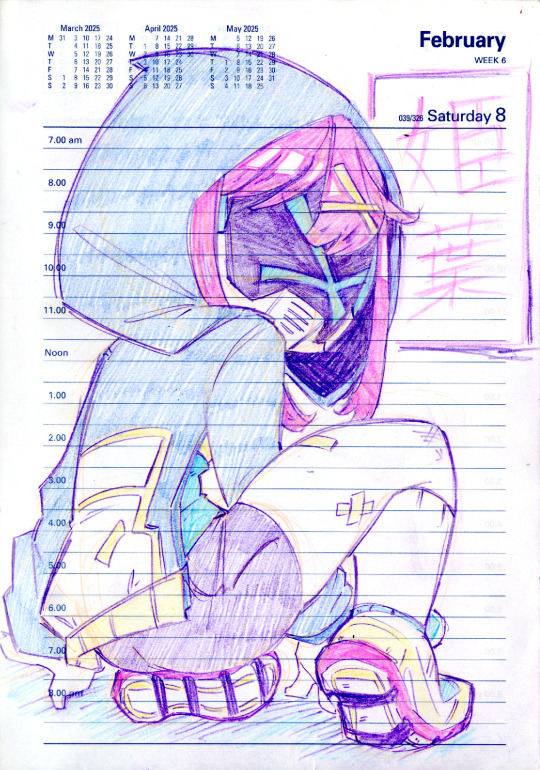
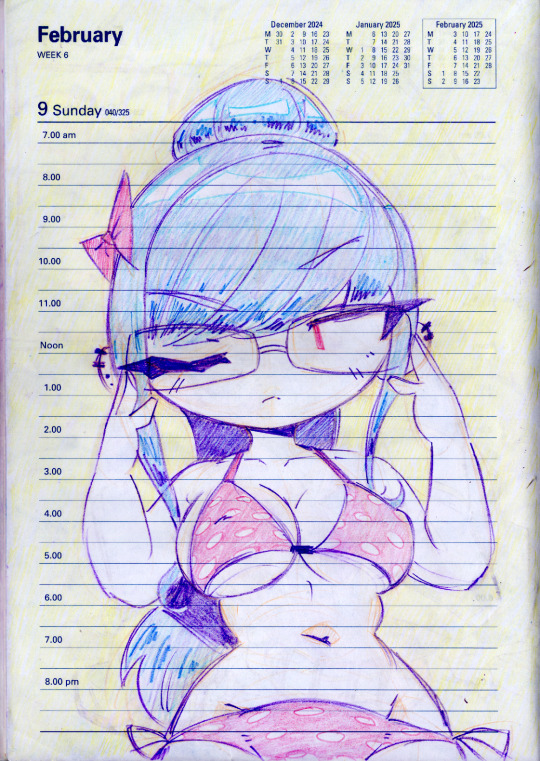

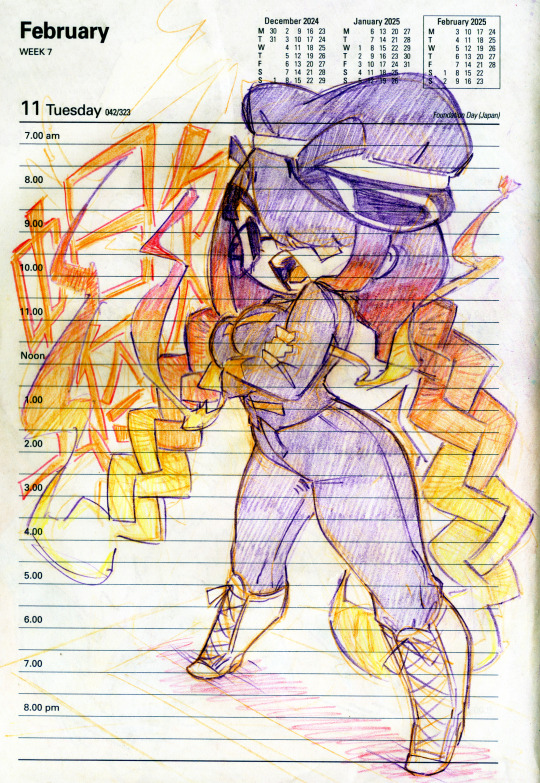
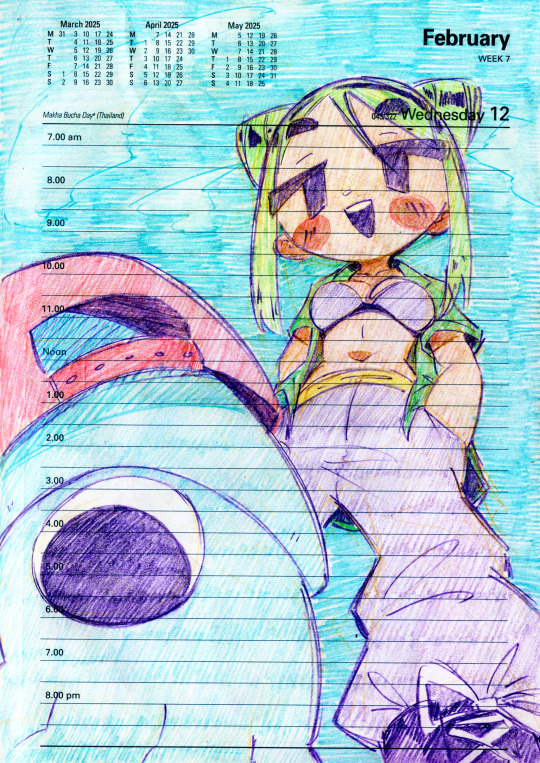



0208-0215
#artstuff#art#illustration#artists on tumblr#2025daily#original character#my oc#himeha#shimeyo#sasori#giade#ikata#egret#yume#eiko and kenzie both belong to yummypillow
454 notes
·
View notes
Text

swimtober 7 / shimeyo
702 notes
·
View notes
Text

yuujiro and shimeyo, hired guns
604 notes
·
View notes
Text

178 notes
·
View notes
Text

shimeyo: merc for hire. very on the spectrum
emiho: bubbly nurse blessed by the stars. attached at the hip to shimeyo
sasori: fiery heiress of a large conglomerate. loud and stupid
sylvester: yume’s boss. gay
gradually introducing a whole bunch of my current ocs bc i recently drew a bunch of them all in one image, but i wanna introduce them gradually and digestibly LOL
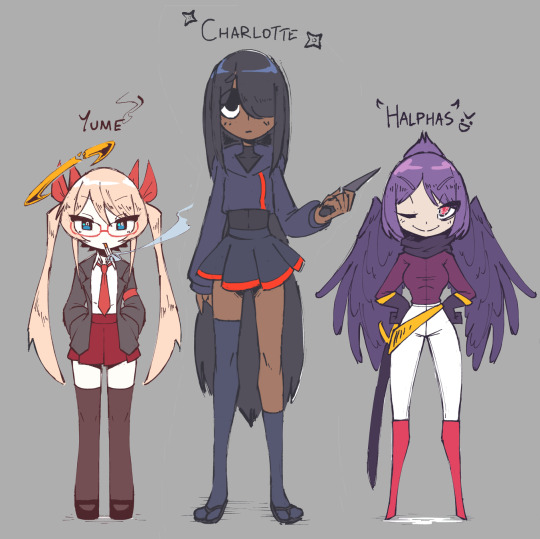
starting with the main 3
yume: fallen angel. self-destructive, promiscuous and stupid. never seen without a cigarette in her mouth charlotte: ninja. sleeps in a bear carcass. clinically depressed, caustic, and very judgemental halphas: demon. sociopath. violent and driven by delusions of grandeur. easily impressed and also stupid
#artstuff#digital art#illustration#original character#my oc#art#artists on tumblr#shimeyo#emiho#sasori#sylvester
823 notes
·
View notes
Text

these bitches do NOT know how to wash a car
1K notes
·
View notes
Text
Kotobukikai 寿会 - 2017
Although much more streamlined than Gion Kobu or Miyagawa Cho, Kamishichiken’s Kotobukikai features the same program each day, so viewers don’t have to choose between which maiko and geiko they want to see performing on stage. However, jikata geiko are not listed (which is a bit of a downer seeing as they’re integral to the show). Kotobukikai takes place from October 8th to 12th at the Kamishichiken Kabukai. Scene 1: Seigaiha 青海波 - Blue Ocean Waves Performers: Umeka (梅嘉), Naohiro (尚ひろ), Umewaka (梅わか), Ichitomo (市知), and Katsune (勝音). Scene 2: Hane No Kamuro 羽根の禿 - Kamuro Playing Shuttlecock Performers: Umechie (梅ちえ), Ichitaka (市多香), Naokinu (尚絹), Ichikoma (市こま), Naoai (尚あい), Umehina (梅ひな), Ichiaya (市彩), and Fumiyuki (ふみ幸). Scene 3: Yoi No Kuzetsu 宵の口説 - Early Morning Lover’s Quarrel Performers: Naoko (尚子), Tamayuki (玉幸), and Umegiku (梅ぎく). Scene 4: Shiki No Hana 四季の花 - Flowers of the Four Seasons Performers: Umeharu (梅はる), Umeshizu (梅志づ), and Ichimomo (市桃). Scene 5: Ennen No Mai 延年の舞 - Dance of Longevity Performer: Fukuzuru (福鶴). Scene 6: Atamayama あたま山 - Mount Atama Performers: Naosuzu (尚鈴), Umechika (梅智賀), Umeha (梅葉), Naokazu (尚可寿), and Ichimari (市まり). Bonus: Current Known Jikata Geiko Shimeyo (〆代), Katsumaru (勝丸), Teruyo (照代), Satonosuke (里の助), Katsuna (勝奈), and Ichisumi (市純).
19 notes
·
View notes
Photo
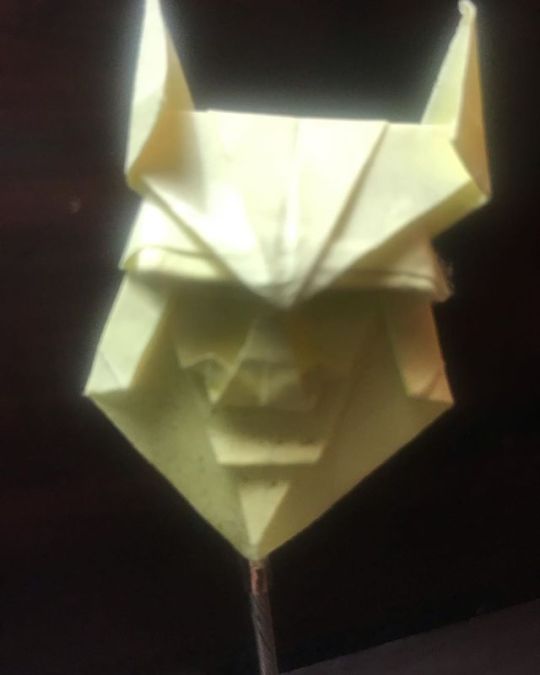
KABUTO The Kabuto undoubtedly played a very prominent and long-lasting role in depicting the ancient war code of the Japanese warriors, however, the symbolism of samurai helmet far surpassed its military application and seeped into Japanese wisdom and everyday sayings. One Japanese saying ‘Katte Kabuto no o o shimeyo, translated as ‘tighten your kabuto after winning’ and points towards the wisdom that ‘one must not adhere to rest very soon after one’s victory as this could be a loss in and of itself’. Another such phrase that uses Kabuto symbolism is ‘kabuto o nugu’ which literally means ‘take off the kabuto’ which is used to depict surrender or sometimes defeat. Design: Kunihiko Kasahara Paper: Post It (2) 90/ #365origamichallenge #samurai #samurais #kabuto #kabutohelmet #samuraihelmet #origami #instaorigami #paperflexn #origamiartist #origamifun #origamipaper #origamilover #paperfolding #origamicraft #origamifolding #paperoflexia #paperliscious #origamidecor #origamichallenge #origamicrane #paperart #foldingpaper #origamiwork #3dorigami #paperartistcollective #origami3d #origamiUSA (at Palmdale, California) https://www.instagram.com/p/B1ziuxup5dB/?igshid=1p4jdvo80ehl3
#365origamichallenge#samurai#samurais#kabuto#kabutohelmet#samuraihelmet#origami#instaorigami#paperflexn#origamiartist#origamifun#origamipaper#origamilover#paperfolding#origamicraft#origamifolding#paperoflexia#paperliscious#origamidecor#origamichallenge#origamicrane#paperart#foldingpaper#origamiwork#3dorigami#paperartistcollective#origami3d#origamiusa
0 notes